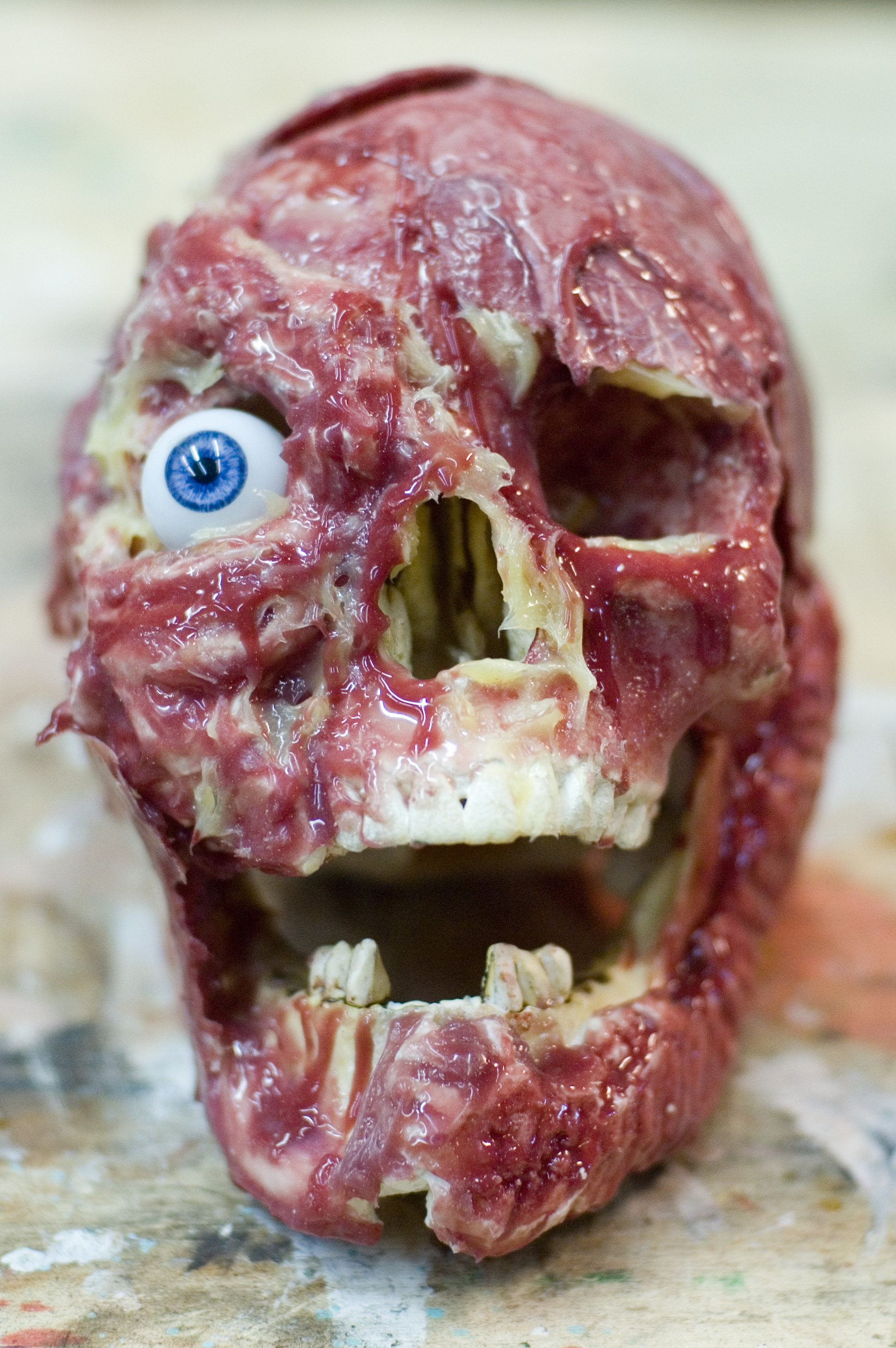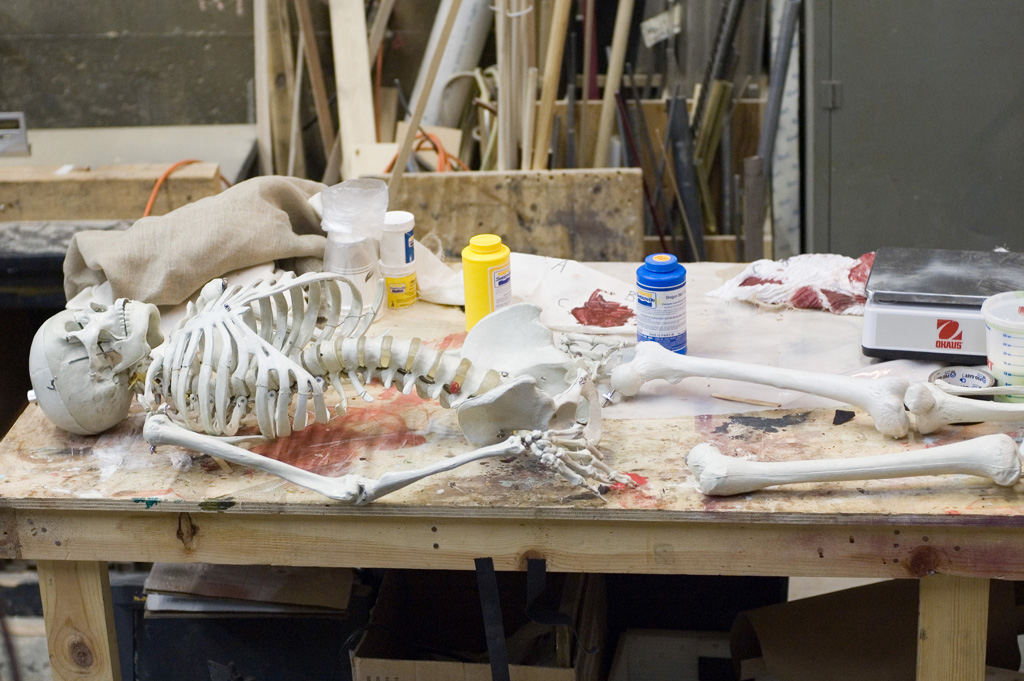In 2011, Jay Duckworth was the second props master to give the keynote address at a KCACTF conference; the first was Thurston James. Jay is the props master at the Public Theater/Shakespeare in the Park (my former boss). He has put up the video of that speech, so I thought I would share it with you here.
Tag Archives: bacchae
Blood Sponge Bag
I touched briefly on the idea of blood sponges in a short video from last summer; we were preparing to use them for The Bacchae, but the scene was re-blocked in a way that negated their necessity. A “blood sponge bag” is an extension of that idea. This effect allows you to produce blood on cue with an easily-hidden apparatus.
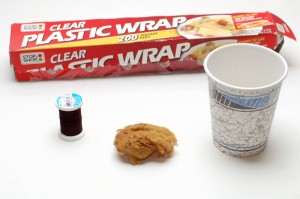
You need some cling wrap (aka “clear plastic wrap” or “Saran wrap”), thread, blood, and a sponge. Don’t be fooled by the preceding photograph; even though I’m using a fancy natural sponge, cutting a chunk off a regular kitchen sponge will serve you just as well.
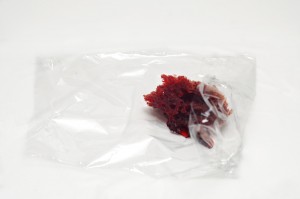
Soak the sponge in your blood and wrap it up in the saran wrap. You can fill the saran wrap with extra blood so the sponge is swimming in it if you want.
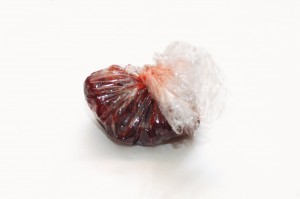
In lieu of cling wrap, you can also use plastic sandwich bags; your end goal is to create an impermeable membrane which is easily burst by squeezing. Balloons and Ziploc may prove too tough, and paper or fabric will allow the blood to seep through and spoil the surprise.
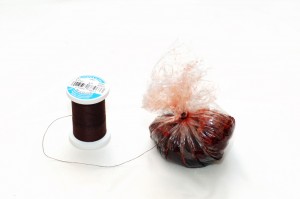
Tie it all up by wrapping thread around the end. You don’t even need to tie any special knots; just wrapping it a couple dozen times should hold it. You can wrap tightly to put the bag under pressure; this will make it easier to burst.
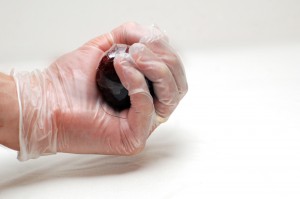
You can now conceal the completed blood bag on your person until the blood is needed. Just give it a squeeze and out it comes. There is, of course, the possibly noticeable sound of the bag bursting; usually this can be covered through the fight choreography. Because the blood is being held by a sponge, you can speed up or slow down the rate of blood flow by altering the pressure with which you squeeze it.
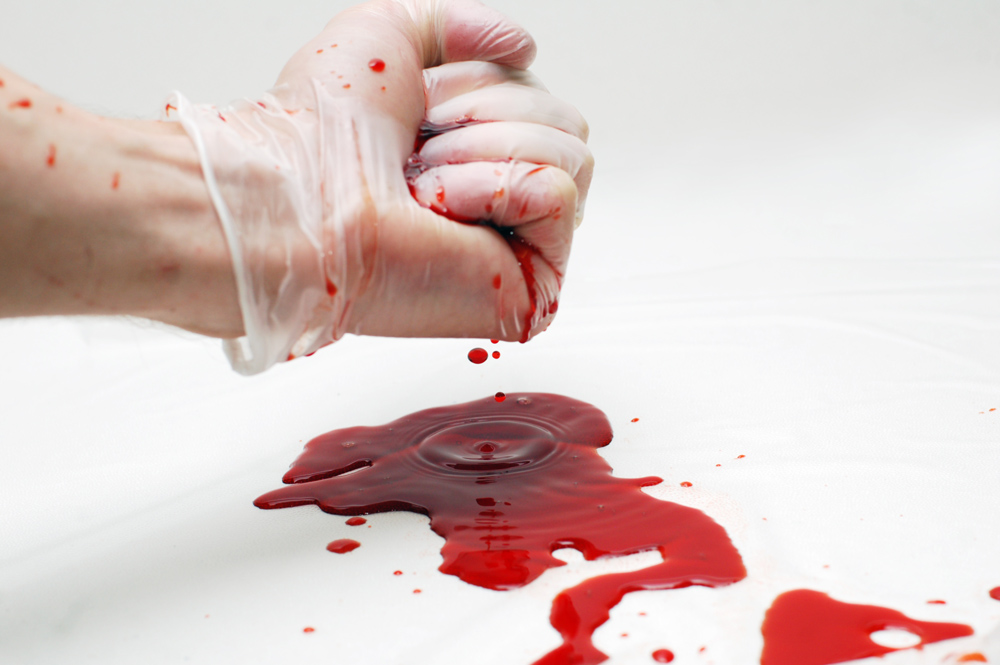
Changes aHead
The Bacchae opens this Monday in Central Park. For those of you who follow this blog, you’ve seen some of the cool work we’ve been doing in the prop shop for this show. Let me say, it wasn’t easy.
I’ve arranged a small series of the various states and stages the head of Pentheus went through.
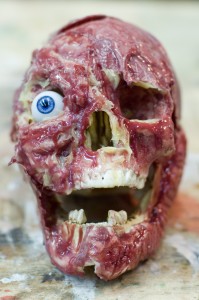
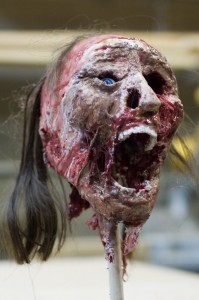

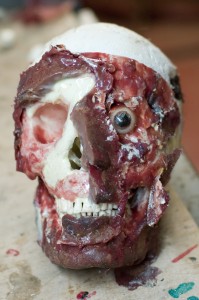
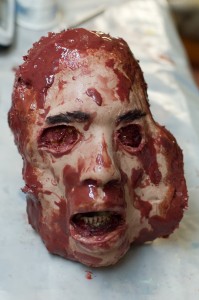
Changed are inevitable when making props. It always seems to be the nicest or most interesting prop you’ve been working on; after spending days or even weeks perfecting what will become the highlight of your portfolio, the prop gets cut, or worse, attacked with hot glue and gaff tape.
It’s natural, and preferable, to be proud of what you build. However, we must also remember that the production is the ultimate goal of our work. If a prop needs to be sacrificed for the show, let it happen. You can never be so attached to a prop that you place it ahead of the needs of the production.
Blood Sponges
We are in the midst of tech rehearsal for The Bacchae here at Shakespeare in the Park; next weekend, we begin preview performances already, and opening night is on August 24th. Needless to say, I’m a little distracted.
Here’s a quick little video showing some “blood sponges” we were working on with the body. You can read more about the body in my previous posts, a Body for Bacchae: Part One and Part Two. We glued some sponges to parts of the body. The idea was that they could be filled with fake blood before the performance. When the actress portraying Agave cradled the corpse, she could squeeze the part of the body with a sponge and have blood run down her hand on cue.
A body for Bacchae: Part Two
In part one of “making a body for Bacchae“, we developed a series of samples and prototypes of dead body parts out of spray foam, Foam Coat, and Dragon Skin. Since then, we’ve been able to show the pieces to the whole production team; John Conklin, the scenic designer, and JoAnne Akalaitis, the director, gave us the go-ahead to continue on with the actual body pieces.
We started with a skeleton. We were originally going to get a skeleton from a medical supply store, but I found a corpsing tutorial at “Skull and Bones.com” which shows that you can get a “4th quality” skeleton from certain companies for a lot cheaper. It may be missing some hardware and fasteners, and the overall quality will be less, but all the pieces are there, and for our purposes, it was perfect.
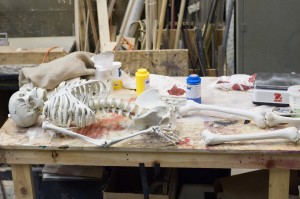
We broke the skeleton apart into several pieces. In the play, King Pentheus is killed through sparagmos, and we had to make the end result. The legs and skull were three separate pieces. We left one shoulder blade and upper arm on the torso, which left us with one complete arm, and one forearm.
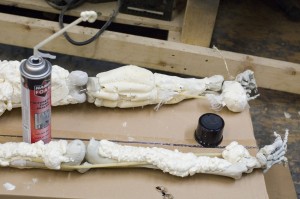
Like the sample pieces, we built the muscle up by spraying expanding foam onto the bones, carving it into muscles, and coating everything with Rosco Foam Coat.


